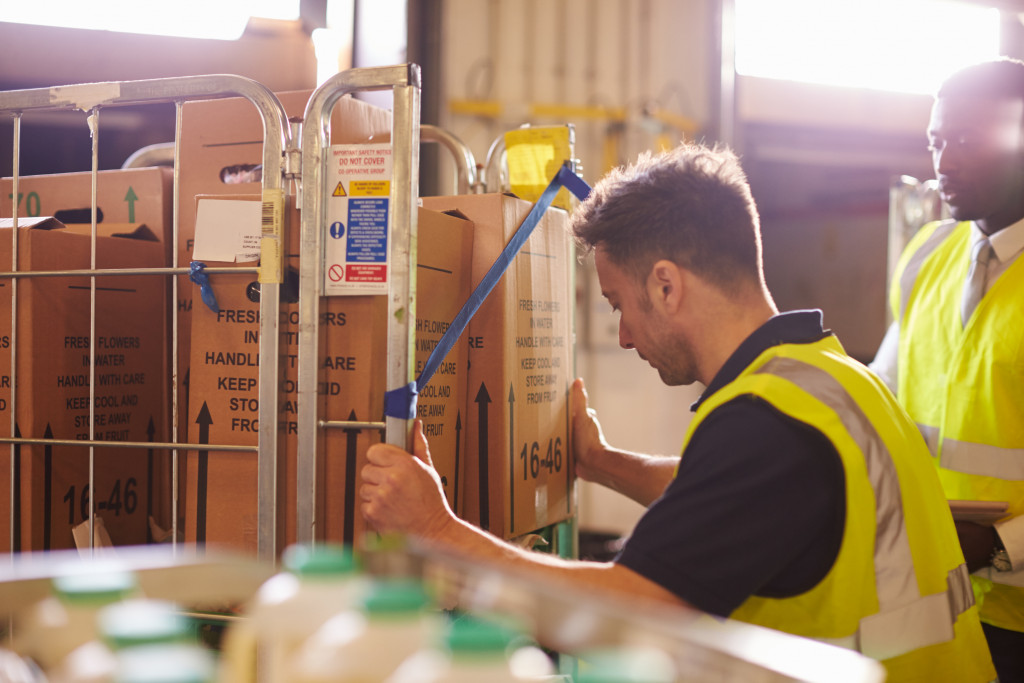As a business owner, getting your products shipped safely and on time is essential to keeping your customers happy. But did you know that there are ways you can proactively protect your products during shipment? By taking a few simple steps, you can rest assured that your products will arrive at their destination in the same condition they left in.
1. Use the Right Material for Packaging
One of the most important things you can do to protect your products during shipment is to use suitable material for packaging. Depending on the product you’re shipping, you’ll want to use different packaging materials. For example, if you’re shipping a fragile item, you might want to bubble wrap the product to help prevent it from breaking. If you’re shipping a liquid, you’ll need to use leak-proof containers. And if you’re shipping food, you’ll need to use food-safe containers.
However, some products may require customized packaging. If you’re unsure what packaging material to use, consult with a packaging expert, such as Americase. They can help you find the best solutions for your shipping needs, from metal shipping containers to custom foam inserts.
2. Use Strong Boxes
When you are shipping products, it is crucial to use strong boxes that will protect your items during transit. Parcels that are too weak can easily be crushed, resulting in damaged goods. In addition, poorly constructed boxes can allow moisture or pests to enter, leading to further problems. To ensure that your products arrive safely, it is best to use high-quality boxes designed for shipping. These boxes will offer the necessary support and protection to keep your items safe during transit.
In addition, using the correct packaging materials will also help to prevent damage. For example, using bubble wrap or foam padding can help to cushion fragile items and prevent them from being broken during shipment. By taking these precautions, you can help to ensure that your products arrive at their destination in perfect condition.
3. Label Your Boxes Properly

In today’s global economy, many products are shipped long distances before they ever reach the shelves. As a result, businesses must take steps to protect their products during shipment. One of the most important things you can do is to label your boxes properly. This will ensure that your products are correctly handled and routed during transit. Additionally, it will help to prevent damage during handling and provide a record of the contents in case of lost or damaged items. When labeling your boxes, be sure to include the following information:
- The name and address of the sender
- The name and address of the recipient
- A description of the contents
- Special instructions for handling or routing (if necessary)
By taking these simple steps, you can help to ensure that your products arrive safely at their destination.
4. Insure Your Shipment
When you insure your shipment, you protect your products from damage, loss, or theft that may occur during transport. There are many different types of insurance available, and the best option for you will depend on the type of product you are shipping, the value of the product, and the shipping method you are using. For example, suppose you are shipping high-value items. In that case, you may want to purchase insurance that covers the full value of the product in case it is lost or stolen.
If you are using a less expensive shipping method, such as USPS First Class, you may only need to purchase insurance that covers the replacement cost of the product. Regardless of the type of product you are shipping, insure your shipment to protect your investment.
5. Track Your Shipment
Finally, one of the best ways to protect your products during shipment is to track your shipment. There are a few different ways to track your shipment. The first is to use a tracking number. This number is assigned to your shipment by the shipping company. You can use this number to track your shipment online or by calling the shipping company.
The second way to track your shipment is to use GPS tracking. This is a system that uses satellites to track the location of your shipment. You can use GPS tracking to see where your shipment is and to find out when it will arrive. The third way to track your load is to use an RFID tag. This is a tag that’s attached to your shipment. RFID stands for Radio Frequency Identification. The label contains information about the shipment, and the shipping company can use this information to track your shipment.
The bottom line
By taking a few simple steps, you can proactively protect your products during shipment and ensure they arrive at their destination safely and on time. From using the right packaging material to tracking your shipment, there are many things you can do to safeguard your products en route. So why not take these steps today and give yourself peace of mind knowing that your products are protected?

